Like what we’ve talked about in previous articles, guppies have long been a fan favorite beginner fish. Due to their peaceful temperament and ease of care, guppies really are one of if not the best beginner fish to keep!
That being said, however, it can get a little boring after a while with only guppies in the tank. You have a nice tank with a stable school of guppies, you’ve managed to follow the rules and kept up with the maintenance schedule. But the time has come where you would like some other fishes to join in your daily fish tank ritual. And you think to yourself, what other tank mates are there that I can keep with my guppies?
What tank mates are suitable?
Guppies by nature are peace-loving fishes and do very well in community setups. Whilst most fishes sold in your local fish store might suitable, it is important to note that not all fishes will be suitable as a tank make for your guppies.
Some guidelines to follow are :
- Size – Choosing another fish that is too big for your tank tends to add stress to guppies.
- Diet – Fish that eat other fishes (carnivores) are a big no-no as they will definitely eat your guppies.
- Temperament – Fishes that are territorial and fierce in general also do not make suitable tank mates and will stress out your guppies.
- Requirements – Fishes that require a different set of parameters to remain healthy just isn’t practical.
So remember to keep these 4 steps in mind when choosing the next tank mate and you’re sure to create a successful and beautiful community aquarium.
Top tank mates for your guppies!
1. Neon Tetras – Paracheirodon innesi
Neon tetras are small schooling freshwater fishes that are native to South America. They are a peace-loving species with very simple dietary and care requirements, much like the guppy! Neon tetras also do not grow up to a big size, maxing out at roughly 1.5 inches in length. However, they are rather sensitive to changes in water chemistry due to their minute size. As such, it should only be added into mature, stable tanks.
Similar to the image above, neon tetras are best kept in schools of about 10-15 at a minimum. Any lesser could stress them out as they require numbers of the same species to feel secure. In the wild, neon tetras are omnivorous, which means they eat both plant and animal matter.
In the aquarium, however, they are quick to adapt to most commercially available feeds such as pellets and flake food. But it is important to note that due to its small size, neon tetras need food items that are small as they have very small mouths. If cared for well, neon tetras can live for as long as 8 years!
Although they are peaceful fishes, neon tetras have been known to nip at fins within their school. Thus it is important to keep them well fed to avoid this problem.
Tank Parameters
- Temperature – 68-79°F
- pH – 6.0-6.5
- dGH – 5-10
2. Corydoras Catfish (Bronze Cory) – Corydoras Aeneus
Often called the cory, corydoras are a very popular choice of pet fish for community aquariums. For starters, the cory is also another peace-loving fish with an extremely easy care level. Generally, cories are bottom dwellers, sifting and feeding on the riverbeds in the wild. In the aquarium, cories also live on the aquarium floor, sifting the substrate and feeding on any left over food. The cory is a great addition to any tank due to its hardy nature and its easy-going characteristics.
The cory is very easy to care for and is generally a shy species of fish which makes it a great tank mate for your guppies. Ranging from 1 to 2.5 inches, the cory catfish also does not grow very big. They are also quite sociable with members of the same species, while they do well in isolation, cories also do well in small groups of 2 to 5 in the same tank.
Dietary requirements of the cory catfish are also very simple. They are omnivorous and rather voracious eaters, constantly sifting and looking for any uneaten food at the bottom of the tank.
Tank Parameters
- Temperature – 72-78°F
- pH – 6.5-7.5
- dGH – 5-10
3. Platys (Xiphophorus)
The platy is no stranger to us. Like the guppy, the platy is also another popular choice of fish for beginners and experts alike for many reasons. The care level and ease of husbandry are top reasons why keepers flock to have a nice school of platys in their tanks.
The platy is a peace-loving fish with many different variations to their colors. And that’s not all, the care for platys are identical to guppies. Platys are also schooling fish and tend to do better in small schools 3-5 than alone. They are also livebearers so with adequate care, be prepared to see babies swimming around in no time. Females tend to give birth about once a month from 1-50 babies per birth, so if you decide to keep platys, make sure you’ve got enough space in your tank to handle future generations of platys!
Platys, like guppies are sexually dimorphic, which means males and females come in 2 distinct forms. Although it is easier to tell males and females apart in guppies, it can be a bit more tricky with platys.
The general rule of thumb is that a fully grown female platy is generally much larger than a fully grown male. However the definite way to differentiate males and females is by looking at their anal fins.
If you look at your platys anal fin, called the gonopodium, the fin on female platys are fan-shaped whereas males have a sharp, pointed gonopodium.
Tank Parameters
- Temperature – 70-75°F
- pH – 6.8-8
- dGH – 10-28
4. Molly – Peocilia Sphenops
Another familiar fish, the molly, like the guppy and platy is also a livebearer. However the largest out of the 3, the molly displays very similar care and characteristics to the guppy and platy alike. Mollys are peace-loving fishes with an easy care level, making them yet another perfect species for a tank mate.
Mollys also tend to do well in small groups, from 3-5. However it is important to note their size, although care requirements are the same, can go to about 3-4 inches when fully mature. As for their diet, Mollys generally eat most commercially available pellets and flakes. Sexing these fish is the same as sexing platys as they are sexually dimorphic, refer to the platy section above if you’ve missed it!
Mollys tend to take slightly longer to give birth at an average of 35-45 days, however, give birth to the same mount as guppies and platys, up to 100 babies at a time!
Tank Parameters
- Temperature – 70-85°F
- pH – 7.5-8
- dGH – 15-30
5. Rummy nose tetra – Hemigrammys rhodostomus
Rummy nose tetras are also a great addition to have in community tanks due to the easy level of care and their hardiness as a species. Also originating from South America (like many of the species mentioned above), the rummy nose tetra is a small schooling fish, growing to a maximum of 2.5 inches.
Groups of this fish work well in a community aquarium as they are shy and generally are less stressed in a school. As in the image above, their common name is rummy nose tetra due to the red spot on their face giving keepers the impression of a “rummy nose”. And while physically very different from neon tetras, their care and husbandry are almost identical. The diet requirements of the rummy nose tetra are easy as they willingly will eat most commercially available pellets and flakes on the market today.
However, sexing rummy nose tetras (and neon tetras alike) is difficult as they are not sexually dimorphic and require a professional eye, but most keepers suggest that females are larger when fully mature.
Tank Parameters
- Temperature – 75-85 °F
- pH – 6.5-7.0
- dGH – 5-10
6. Otocinclus Catfish – Otocinclus
The otocinclus catfish (or oto in short) is a small species of freshwater catfish native to South America. Their petite size and shy demeanor make them an excellent choice for tank mates for guppies.
Often referred to as dwarf suckers as well, otos grow to a maximum size of about 1.5 inches. Their diet primarily consists of algae and are exclusively herbivores. The oto also favors plated tanks with some algae.
It is important to note that otos do not eat commercially available pellets for other fishes but will eat algae wafers and their diet also can be supplemented with other vegetables such as zucchini slices. The care for the oto is simple if you know what their diet is. Many new hobbyist tend to neglect this aspect and are surprised to find their oto dead within the first few days of purchase. Otos also do fine both alone and in small groups of 2 – 5.
However, once established, otos do great work in an aquarium, keeping algae growth at bay and giving you another dimension of appreciation.
Tank Parameters
- Temperature – 70-79 °F
- pH – 6.5-7.5
- dGH – 10-15
7. Zebra Danio – Danio Rerio
Zebra danio or zebrafish in short originate from some rivers in East India. They are a schooling fish as well and do very well in community aquariums due to their shy nature and ease of care.
They are noted by their distinct horizontal stripes that run from their gill to tail. These features combined with their characteristics make them a very popular choice for a tank mate as well. Zebrafish are peaceful and get along well with most other tankmates and will rarely cause problems. What’s interesting about this species is that they generally mate for life, and will rarely mate with other fishes once their mate dies.
Like the neon tetra, zebrafish are not picky about their food and will readily accept most commercially available pellets or flakes. Fully grown, they are about 1.5 inches in length.
If you’re a beginner wanting to try out breeding egg-laying fish, the zebrafish is also a great choice to start with as they are very prolific breeders. Each clutch usually consists of 200-500 eggs, hatching in about 48 hours. However that’s more for another article.
Tank Parameters
- Temperature – 65-75 °F
- pH – 6.5-7.2
- dGH – 5-10
8. Dwarf Gourami – Trichogaster Laius
The dwarf gourami originates from India as well, commonly found in waters with heavy/thick vegetation. They are also a labyrinth fish, meaning they can extract oxygen from the air, pretty cool huh?
Dwarf gouramis also do not grow very big, generally growing to a maximum of 2-2.5 inches in length. In the wild, they generally hang near the surface of the water as they are commonly found in low oxygen waters. Likewise in the aquarium, you will constantly find them near the surface. They are also a shy and peace-loving species of fish, making them perfect tank mates for guppies.
Dwarf gouramis are also omnivores, meaning that they will eat both animal and plant matter. In the wild, they feed primarily on small invertebrates that fall onto the surface of the water and enjoy grazing on algae. They are not particularly picky eaters, most commercially available food pellets and flakes will work fine.
Tank Parameters
- Temperature – 73-82 °F
- pH – 6.5-7.5
- dGH – 5-10
9. Harlequin Rasbora – Trigonostigma Heteromorpha
Originating from Southeast Asia, the harlequin rasbora (also sometimes called the red rasbora) is not only a common and beautiful fish, but is also easy to keep.
The harlequin rasbora is a schooling fish and should be kept in a school of about 5-10 fishes. They are also peace-loving and do extremely well in community tanks. Their diet generally consists of most commercially available food pellets and flakes, so feeding them is not difficult. They grow to a maximum length of about 1.5 inches and have a life expectancy of about 5 years if cared for properly.
Tank Parameters
- Temperature – 73-83 °F
- pH – 6.0-7.5
- dGH – 5-10
10. Glass catfish – Kryptopterus vitreolus
Possibly my favorite fish in this list, the glass catfish is a quirky and interesting fish to add to your tank. Their transparent body and peculiar outlook are always topics for conversation whenever guests are over.
These fish originate from Southeast Asia and do best in planted tanks. Most other catfishes are bottom dwellers and keep to their corners of the tank, but not the glass catfish, they’re always swimming around. And what’s great about them is that they also do great in a school!
Glass catfish are also not picky eaters. In the wild, they feed on small worms and invertebrate that fall through the water column, however in the aquarium, most commercially available pellets or flakes will do just fine. If cared for properly, these fishes also can live to about 8 years of age.
Generally, glass catfishes, although considered small for a catfish variety, grow to about 4-5 inches, which might be an issue for a small community tank. So remember if you want to make the glass catfish as an addition to your tank, make sure you have enough space.
Tank Parameters
- Temperature – 75-80 °F
- pH – 6.5-7.0
- dGH – 5-10
11. Ghost Shrimps – Palaemonetes paludosus
The ghost shrimp (or sometimes called glass shimps) is also another quirky and fun addition to your tank. They are a small species of shrimp that originate from North America and have been a popular addition for tanks all over the world.
As the name suggests, ghost shrimps are almost completely transparent to camouflage from predators in the wild. Like most shrimps, the ghost shrimp is a shy and reclusive creature that usually spends most of its time hiding from other fishes.
Ghost shrimps are predominantly scavengers and will readily clear up any uneaten food that falls to the bottom of the tank. They also grow to a maximum of 1.5 inches and have a lifespan of about 1 year.
Although they are sometimes bought as feeders for bigger species of fish, the glass shrimp makes a fun and interesting addition to a small community tank.
Tank Parameters
- Temperature – 65-82 °F
- pH – 6.8-7.5
- dGH – 5-10
12. Nerite Snails – Neritina Natalensis
Nerite snails are a great addition to any tank because of their ease of care and low maintenance requirements. They feed exclusively on algae and require little to no extra food. Nerite snails have been known as an algae control measure as well.
In the wild, nerite snails generally feed on algae and plant matter. Similarly, in the aquarium, nerite snails feed on soft algae and do their job as a cleanup crew very well! They generally live to about 3 years of age in the aquarium and are a very peaceful species.
Tank Parameters
- Temperature – 65-85 °F
- pH – 7-8
- dGH – 5-12
13. Khuli loach – Pangio kuhlii
Khuli loaches are small scavengers originating from Southeast Asia. They are an eel-like fish that lives at the bottom of the tank. Growing to a length of about 4 inches, the khuli loach is another interesting option for your community tank.
In the wild, they inhabit shallow forest streams and generally feed on any small invertebrate that they can get their mouths on. In the tank, they scavenge the substrate for any uneaten food.
The khuli loach is another great member of a cleanup crew if you have problems overfeeding.
Tank Parameters
- Temperature – 73-86 °F
- pH – 5.5-6.5
- dGH – 3-7
14. Pleco – Hypostomus plecostomus
The common pleco, or pleco in short, is a species of armored catfish that originate from of South America. They have also been known to be found in parts of Asia as well.
The pleco is an omnivorous bottom-dweller that feeds on algae and leftover food that fall to the bottom of the tank. This makes them an attractive choice as they are both peaceful and do a great job at keeping your tank clean. They are nocturnal creatures, meaning they are most active at night and are generally dormant during the day. The care for a pleco is not difficult as they generally are not picky eaters and will thrive in a wide spectrum of water parameters.
However, the downside of keeping a pleco is that they do grow quite large, sometimes up to 24 inches in length, so keeping them will require a fairly large tank.
Tank Parameters
- Temperature – 72-86 °F
- pH – 6.5-7.5
- dGH – 5-12
15. Hatchetfish – Gasteropelecus sternicla
The common hatchetfish is another interesting addition to our list. Their weird shape, quirky behavior, and peaceful temperament make them great additions to any community tank.
In the wild, hatchetfish stay near the surface of the water, catching any flying insects that may come close. They do this with incredible precision and leap out of the water to catch their prey. As its name suggests, the hatchetfish is named after the hatchet due to its peculiar bodyshape. They also do not grow very large, reaching about 2.5 inches at maximum. Hatchetfish also do well in small groups of 2 to 5.
Feeding is not difficult, any commercially available floating pellets that fit their mouths will suffice as they are not picky eaters.
Tank Parameters
- Temperature – 72- 80 °F
- pH – 6.5-7.5
- dGH – 5-12
16. Blackskirt Tetras – Gymnocorymbus tertnetzi
As its name suggests, black skirt tetras have a long and extended anal fin which looks like a black skirt. Originating from Brazil, the black skirt tetra is a great choice for a community tank as it is hardy, peaceful and very easy to care for.
In the wild they are a schooling fish hence would do best in a small school of 3-5. They are omnivorous and will readily feed on most commercially available food pellets and flakes.
Tank Parameters
- Temperature – 70-85 °F
- pH – 6.8-7.0
- dGH – 5-10
17. Dwarf Pencilfish – Nannostomus marginatus
Dwarf pencilfish originate from South Americas Amazonian River Basins. They are a tiny peaceful fish with an eash level of care.
Growing to a maximum of about 1.5 inches, the dwarf pencilfish is very suitable for community aquariums as well. In the wild, the inhabit mid-water columns and swim in schools for protection. As they are a schooling fish, they tend to be very skittish and should only be housed in schools of at least 10 fishes or more, with adequate plants for shelter.
Feeding this species is easy as they are not picky eaters, any commercially available small pellet and flake food will do fine.
Tank Parameters
- Temperature – 75-80°F
- pH – 5.8-7.3
- dGH – 8-12
18. Spackling Gourami – Tricopsis pumilia
The sparkling gourami, commonly known as the pygmy gourami, is a small freshwater fish native to Southeast Asia.
Like the dwarf gourami, the sparkling gourami is also another labyrinth fish which can extract oxygen from the air. They are generally shy and peaceful fishes which are easy to feed and care for. Growing to a length of about 1.5 inches, the sparkling gourami is also another interesting addition to have as a tank mate for your guppies.
Feeding them is not difficult as they are not picky eaters. Any commercially available food pellets or flakes will be suitable.
Tank Parameters
- Temperature – 72-80°F
- pH – 6-7.5
- dGH – 5-10
19. Mosquito Rasbora – Boraras brigittae
Endemic to South Borneo, mosquito rasboras are tiny schooling fish much like the neon tetra. Growing to an average size of 1.5 inches, mosquito rasboras are a good choice as a tank mate as they are of similar size and care levels to guppies.
In the wild, they swim together in schools and as such should be kept together in schools of at least 5-10 fishes. Feeding them is simple and they readily eat commercially available pellets and flakes.
Tank Parameters
- Temperature – 73-82°F
- pH – 6.5-7.0
- dGH – 5-10
20. Killifish
Killifish are long time fan favorite fish in the aquarium industry. Not only are they easy to keep, they also come in many different beautiful colors. Killifish come from all over the world and are a peaceful aquarium fish which usually make them very attractive choices for a tankmate.
In the wild, killifish are carnivores and feed on small invertebrates and worms in their environment. But in the aquarium, most commercially available pellets and flakes will do just fine, although they do appreciate the occasional treat of tubifex or blackworms. The killifish also does not grow to a large size, averaging out at around 2 inches.
Tank Parameters
- Temperature – 70-75°F
- pH – Different for different species
- dGH – Different for different species
21. Amano Shrimp – Caridina multidentata
Amano shrimp have been a popular choice for community tanks for many reasons. Much like the ghost shrimp, the Amano shrimp are a hardy shrimp known for their capabilities to control algae in the tank. They are a peaceful species but also voracious eaters, cleaning up most if not all left over food that fall to the bottom of the tank.
Growing to about 2 inches, Amano shrimps generally live to about 2 years of age.
Tank Parameters
- Temperature – 70-80°F
- pH – 6.5-7.0
- dGH – 7-10
Frequently Asked Questions
How many fishes should I have in my tank?
The general rule of thumb is to have 1 fish per gallon of water in your tank. E.g a 5 gal tank should house a maximum of 5 fishes. However this is also open to interpretation as the size of the fish matters. From experience, I would suggest keeping no more than 10 guppies in a stable 5 gal tank.
I found a fish that was not in this list, how will I know if it’s suitable?
The first thing you should do is research the fish before buying it. Ask the aquarium staff for its name and gather as much information as you can before making the purchase. Remember if you fail to plan, you plan to fail.
Conclusion
Congratulations, you’ve now come to the end of this lengthy article, however keep in mind the 4 guidelines we highlighted at the start of the article and I am certain you will be successful in finding a suitable tank mate for your guppies.
While there are many more species of fish that might be suitable, its always good to err on the safe side and hold back on your purchase whenever you are not sure. Some species of fish, while small, will cause disasters in your aquarium, for example small pufferfishes which tend to nip and bite at everything they can get their beaks on, fins and plants alike!

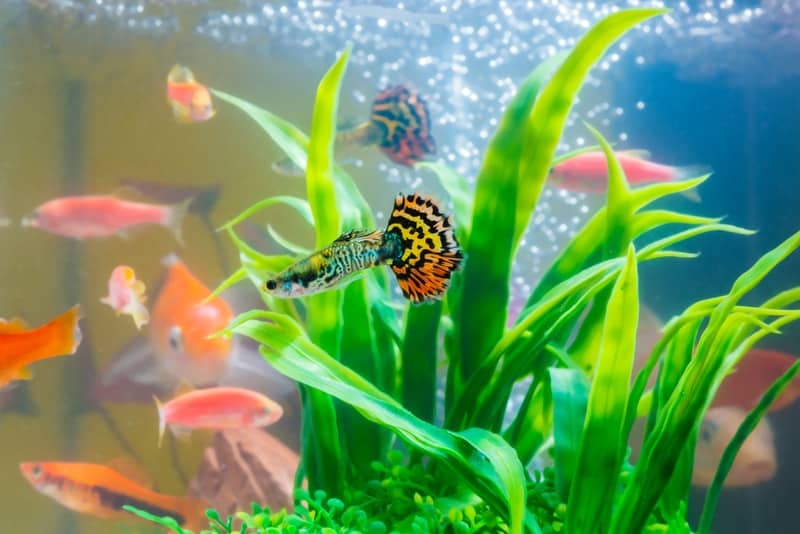

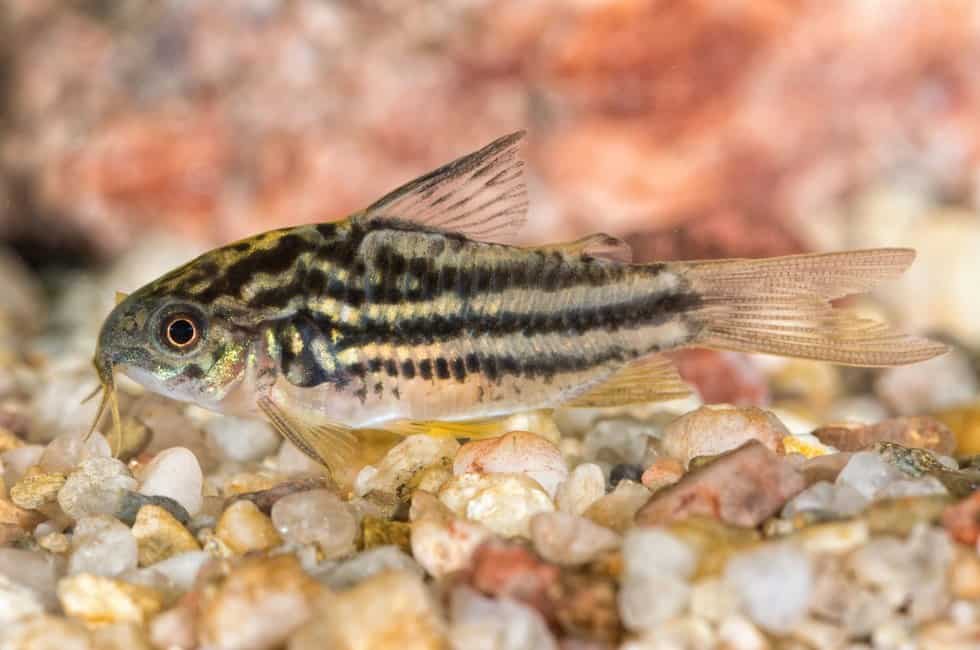
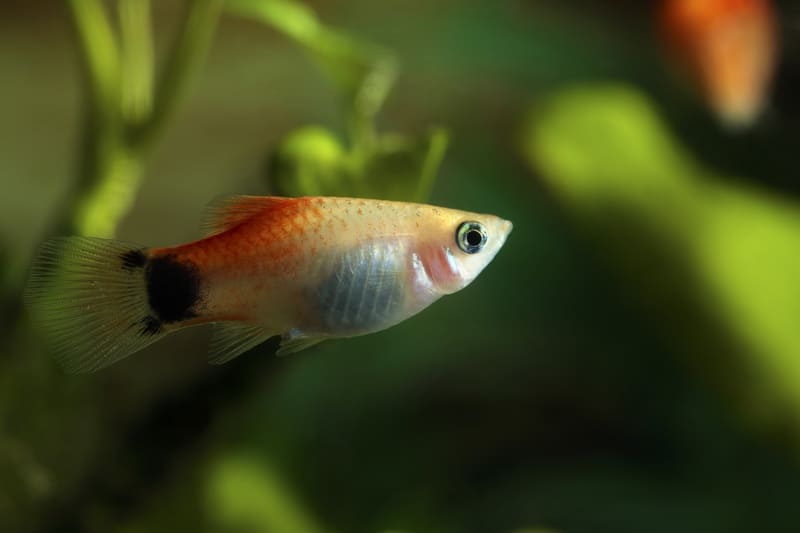
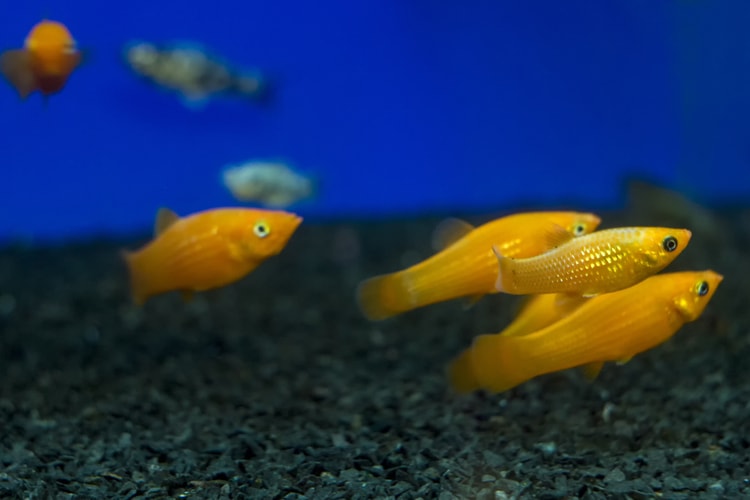
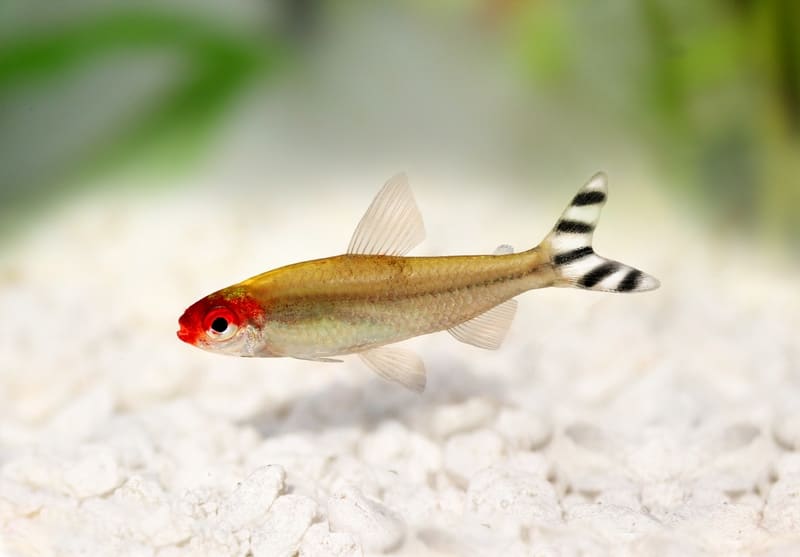
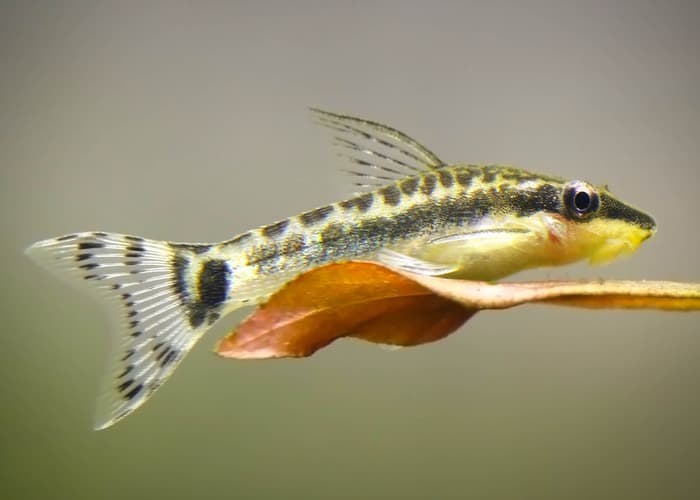
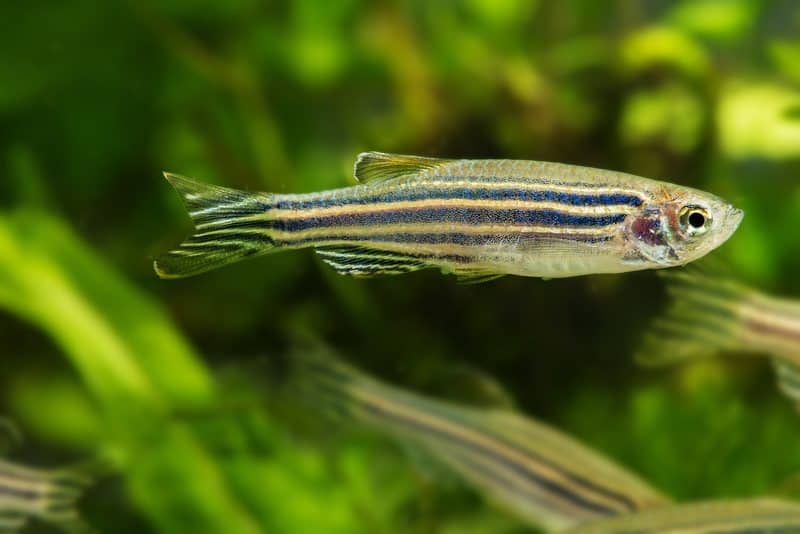
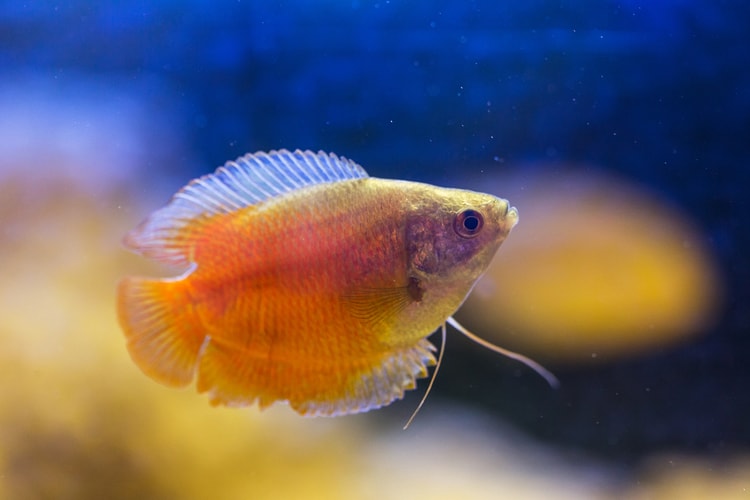
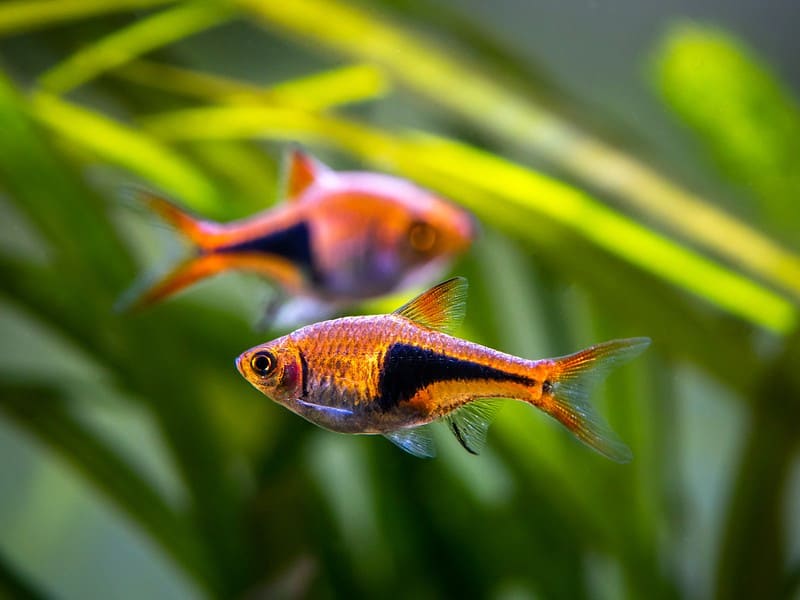
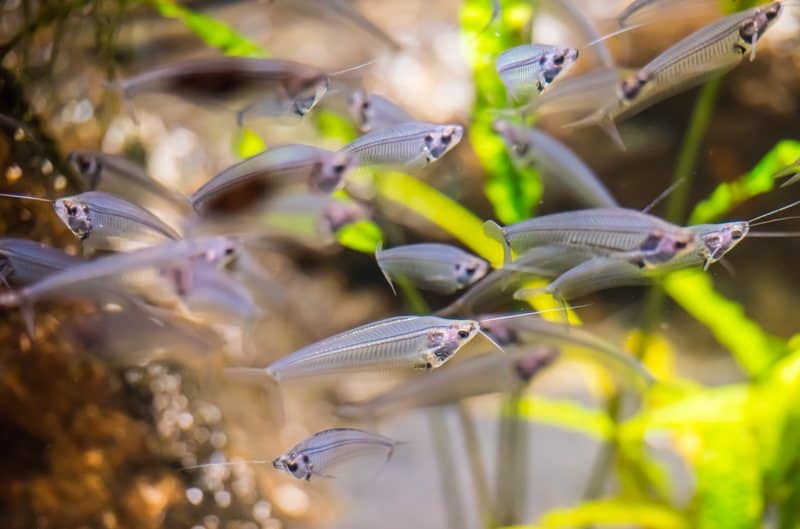
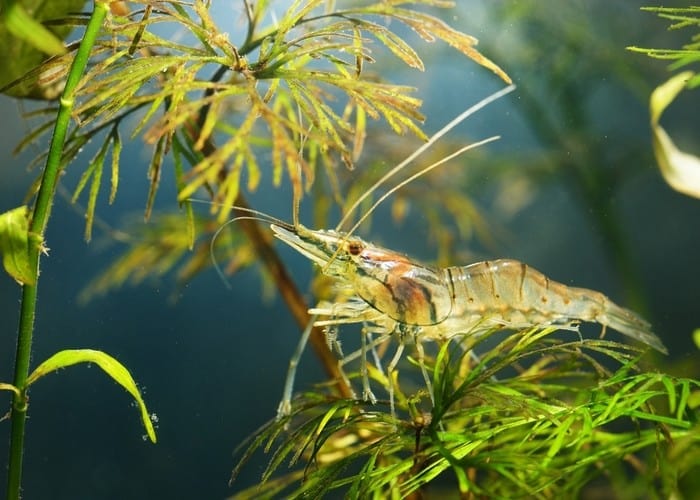
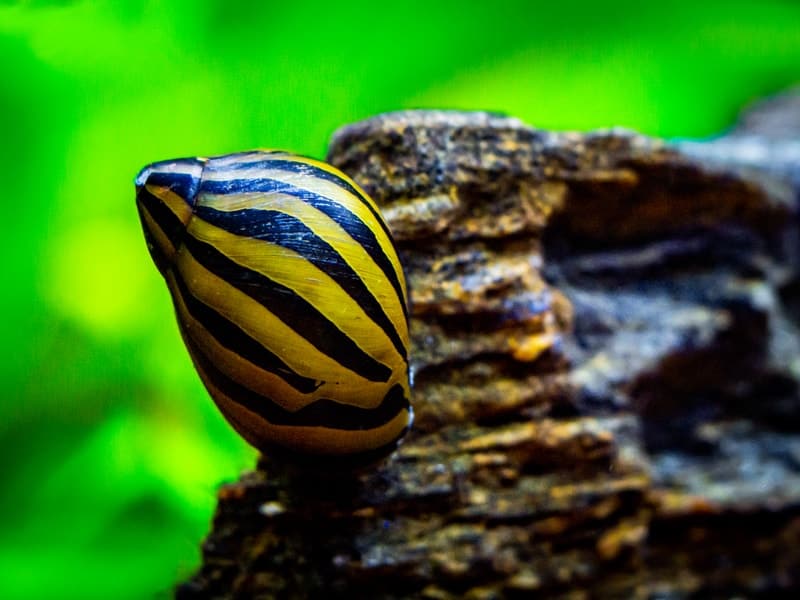
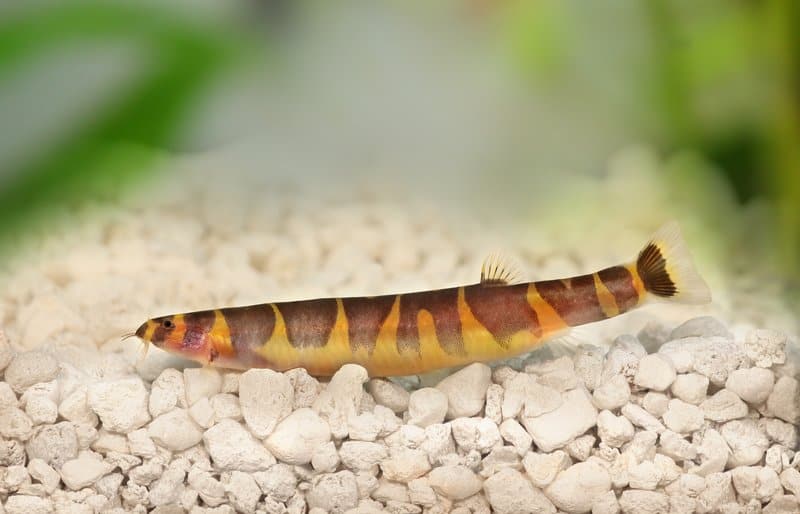

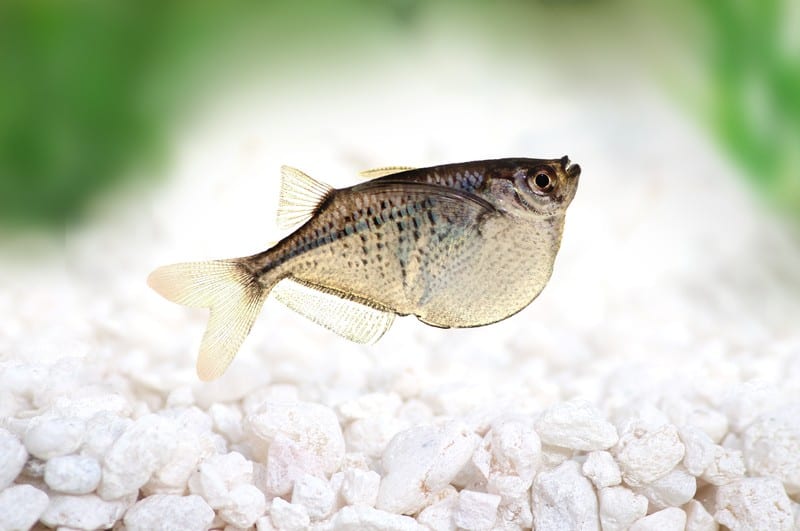

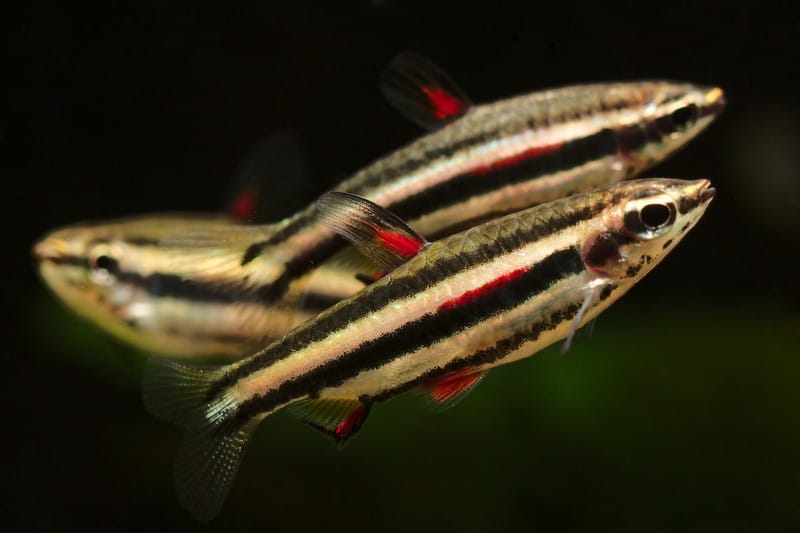
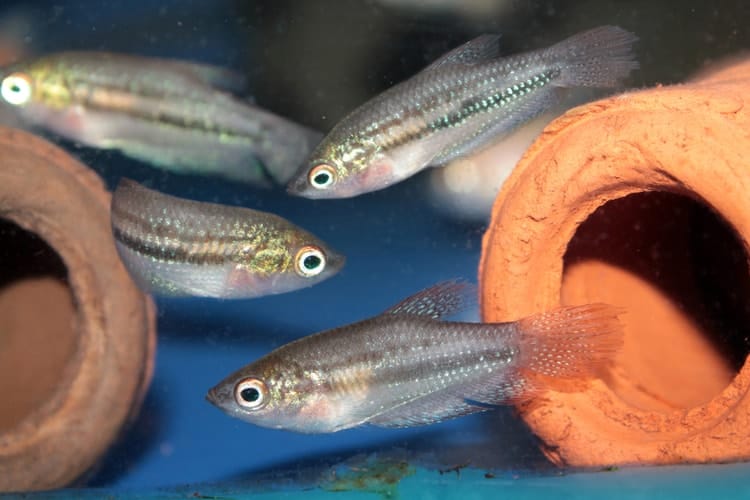
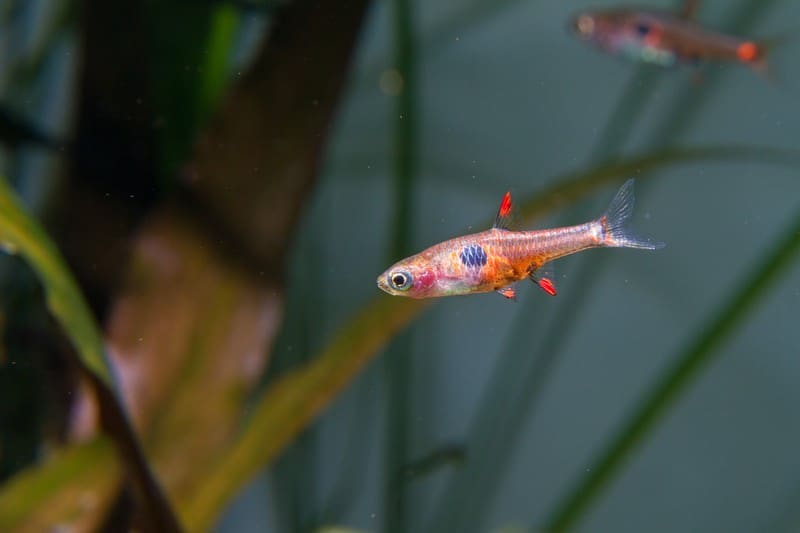
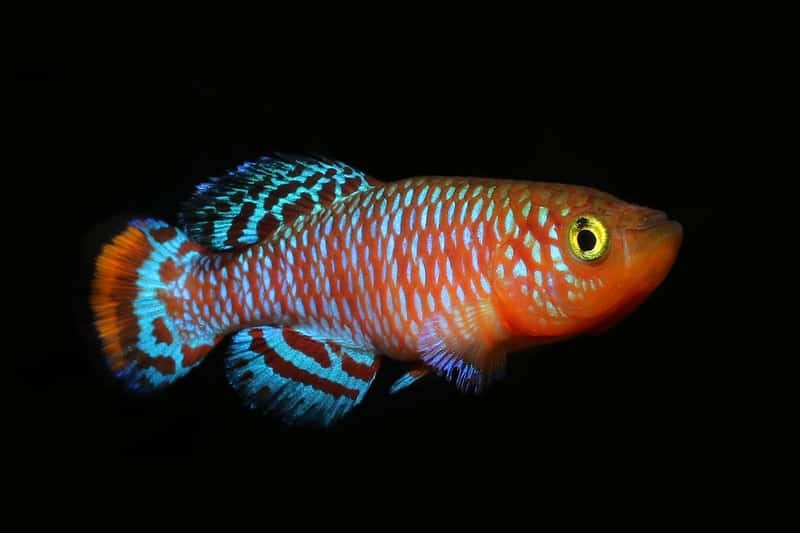
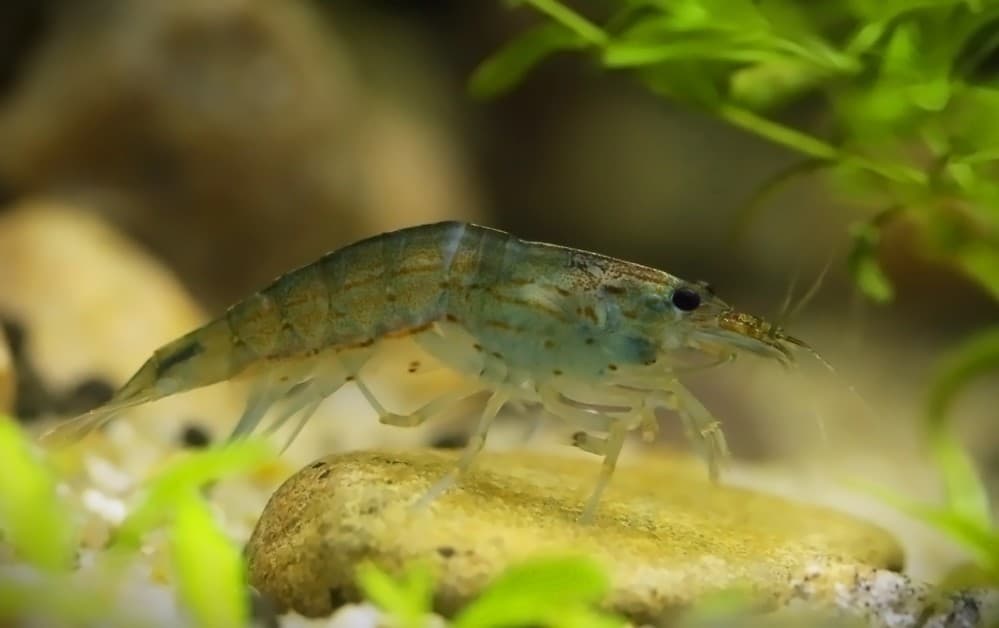
Jannie
Monday 20th of April 2020
How do I know my aquarium water is too hot for my cichlids?
Saurabh Kumar
Tuesday 21st of April 2020
Well, it depends on the cichlids you have, for example, African Cichlids like a temperature between 73 and 82 degrees Fahrenheit. You should get a thermometer for your fish tank, like this one.